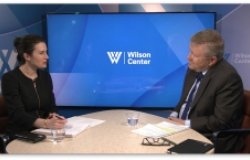How Four Years of Civil War Has Destroyed Syria
"The Syrian Center for Policy Research, which is supported by two United Nations agencies, concludes that human development is 'rapidly regressing,' which is destabilizing a country that has long been the strategic center of the Middle East," writes Robin Wright.
Four years into its civil war, Syria is a “catastrophic” disaster where society has begun to disintegrate, life expectancy has plummeted, most people are jobless, and millions of children have abandoned school, a new report shows.
The Syrian Center for Policy Research, which is supported by two United Nations agencies, concludes that human development is “rapidly regressing,” which is destabilizing a country that has long been the strategic center of the Middle East.
The numbers are staggering in every category, but the shortened life expectancy stands out. In 2010, life expectancy in Syria was almost 80 years. Today, life expectancy from birth is estimated at 55 years, the report says.
Syria began to implode shortly after President Bashar al-Assad‘s regime cracked down on peaceful demonstrators in March 2011. The conflict has produced dozens of militias, including Islamic State, and destroyed vast swaths of major cities and countryside.
Survival is an issue for the majority of Syrians because the economy is no longer sound, the report says. Unemployment has surged to 57.7% from around 15% when the uprising began in 2011.
Four out of five Syrians live in poverty. Two-thirds are unable to secure basic foods and essentials for daily life, and Syria “has become a country of poor people,” the report warns.
Economic loss since 2011 exceeds $200 billion. “The armed conflict has depleted the capital and wealth of the country,” researchers conclude. “The continuing closure of businesses and the shedding of labor have resulted in a fundamental restructuring of the economy, with a lacerating contraction of most economic sectors.”
Education is in a “state of collapse.” More than half of Syrian children no longer go to school. Most have not been to school for three years, spawning the beginning of a lost generation.
In desperation, the “economy of violence” has led growing numbers of Syria’s young people to enlist in networks engaged in illicit activities, smuggling, and war-related enterprises, the report says.
Human geography has been transformed in just four years, the report warns. Syria’s population has been hollowed out by 15%; more than half of Syrians have been displaced from their homes by violence. More than 3.3 million have fled Syria as refugees, with an additional 1.5 million migrating to find work and safer terrain in other countries.
Physical trauma is rapidly escalating too, the report says. At least 6% of Syria’s population has been killed, maimed, or wounded over the past four years. The number of injured has reached 840,000, while the death toll almost doubled in 2014 and is nearing a quarter-million people—with no end to the conflict in sight. International diplomatic efforts so far have failed. Western-backed rebels have increasingly lost territory over the past year to militants in Islamic State and Nusra Front, with the exception of Kobani, a small Kurdish town on the Turkish border. And the Assad regime, with help from Iran and Lebanon’s Hezbollah militia, appears able to survive for the foreseeable future. There may be many more years of war to come, mainly at the expense of Syria’s people.
The opinions expressed here are solely those of the author.
This article was originally published in The Wall Street Journal’s Washington Wire.
About the Author

Robin Wright
Author and columnist for The New Yorker

Middle East Program
The Wilson Center’s Middle East Program serves as a crucial resource for the policymaking community and beyond, providing analyses and research that helps inform US foreign policymaking, stimulates public debate, and expands knowledge about issues in the wider Middle East and North Africa (MENA) region. Read more










